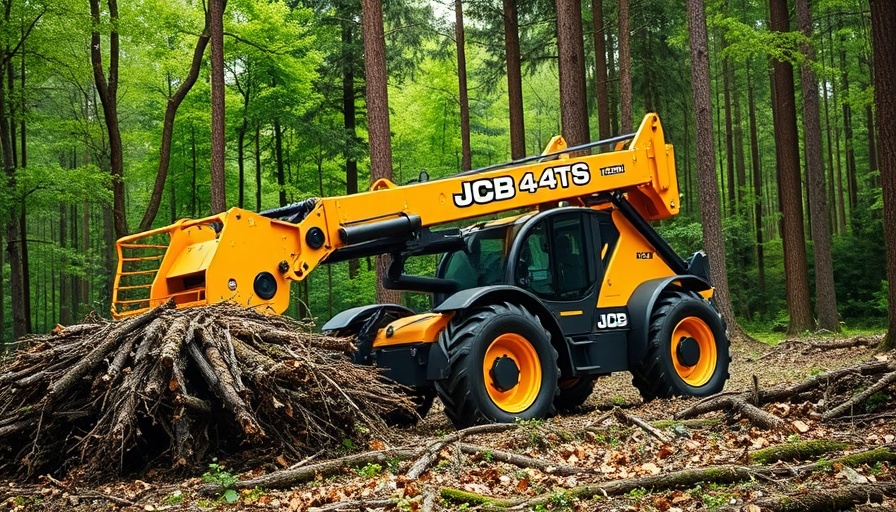
Introducing the Game Changers: JCB's 4TS Teleskid and 400T CTL
In a bold move to redefine heavy machinery, JCB recently introduced its most powerful machines yet: the 4TS Teleskid and the 400T Compact Track Loader (CTL). Both machines feature an impressive 109 horsepower, a significant leap that echoes the growing demands of construction professionals seeking enhanced performance on site.
Power Meets Performance
The standout feature of these new models is undoubtedly their powerful engine. Utilizing a JCB 4.4-liter EcoMax engine, the machines not only deliver 109 horsepower but also offer a remarkable 380 foot-pounds of torque. This level of torque is designed to tackle tough jobs that require heavy lifting and pushing, making both machines suitable for a variety of tasks such as excavation, material handling, and landscaping.
Unmatched Hydraulic Flow
An important advancement in the 4TS Teleskid and 400T CTL is the hydraulic capabilities. With up to 41 gallons per minute of hydraulic flow, these machines can run powerful attachments, including big machinery like forestry mulchers and snowblowers, effectively broadening their functionality. JCB's commitment to hydraulic performance means that operators can now maximize their productivity on-site.
A Design Built for Durability
Despite the boost in engine performance, the dimensions of both the 4TS and 400T remain similar to JCB's previous models, maintaining a width of 6.5 feet and a roof height of approximately 6 feet. This consistency allows for familiarity in operation while providing the added value of increased power. The models can also dig up to three feet below grade, which is essential for various applications.
Operator Satisfaction: Listening to Customer Feedback
JCB's decision to elevate its compact loader offerings came directly from customer feedback over the past three years. Product Manager Lee Tice emphasized the need for more power and hydraulic flow, which drove the company to innovate further. “The consistent feedback was… we need more horsepower,” Tice expressed. This commitment to listening and responding to customer needs demonstrates JCB's dedication to providing high-quality machines that professionals can rely on.
The Future of Compact Track Loaders
As the demand for versatile and powerful construction equipment continues to grow, JCB's launch of the 4TS Teleskid and 400T CTL sets a promising precedent. These machines not only enhance the performance threshold but also encourage professionals to consider new possibilities in job efficiency. The introduction of more powerful equipment can lead to new market standards, challenging other manufacturers to innovate in order to keep pace.
Conclusion: An Invitation to Experience the Innovation
For contractors looking to elevate their business capabilities, investing in JCB's 4TS Teleskid or 400T CTL could be a transformative decision. With the muscle and versatility to tackle a variety of projects, these machines represent significant upgrades over their predecessors. Don’t miss the opportunity to explore how the right equipment can ultimately drive success in your projects.
 Add Row
Add Row  Add
Add 




Write A Comment